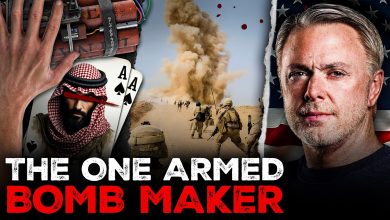A History of The 1911
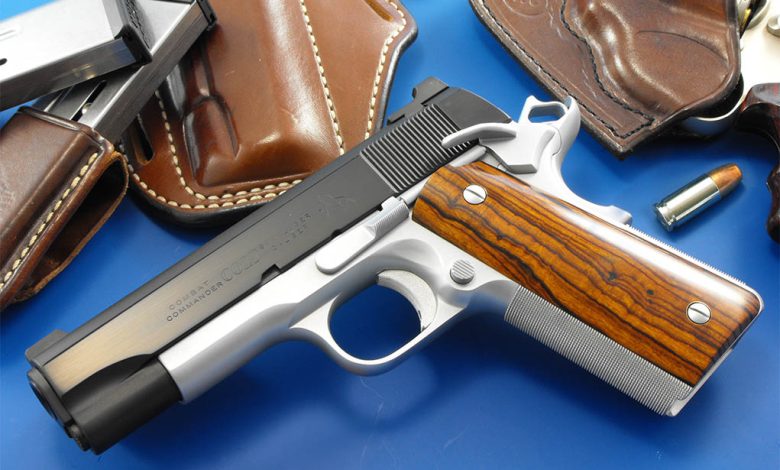
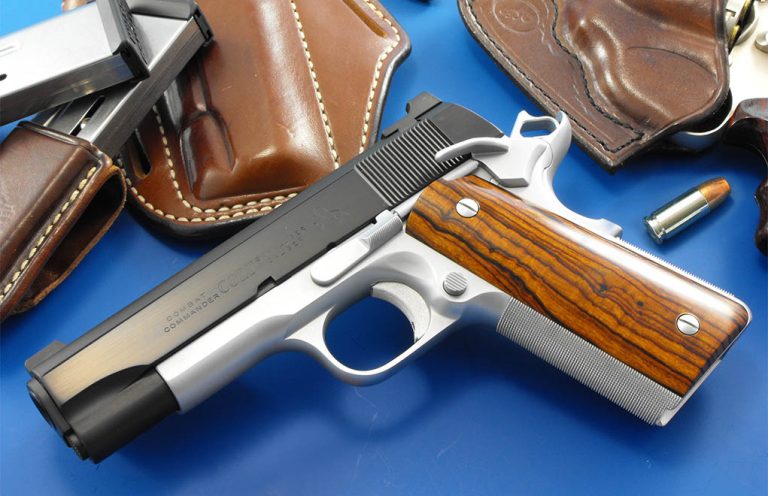
We take a deeper look at the history of the 1911, tracking its journey from the mind of John Browning to its place today as the most iconic American handgun ever made.
When the late physicist Stephen Hawking was working on his book, A Brief History of Time, his publisher told him that each equation he used would cut the book sales in half. He rolled the dice and risked it, including just one equation. The book was a success, and when it came time to update it to a second edition, he included a second equation. I’m no Hawking, but I will resist putting in equations unless necessary. And I’ll try to be brief.
You may hear 1911 fans talk about “Saint John” or “The Mormon Genius.” The period we’re looking at here is the last decade of the 19th century. Smokeless powder was still new but was around long enough that gunmakers were now comfortable with it. A self-loading pistol would be the hot new property to make some lucky somebody rich. The bolt-action rifle had been perfected (several times, in fact). While the double-action revolver was a good thing, Smith & Wesson had revealed in 1898 the frame that would become the K-Frame and the .38 Special to go with it—a self-loading pistol would be a real money-maker.
The only problem was design. And the designers of the age were stuck in the “receiver and breechblock” paradigm. The exemplar here would be the Luger, which was a receiver with a barrel screwed into it, just like rifles, and used a breechblock that cycled inside of the receiver. Another was the Mauser Broomhandle, the C96. Again, a barrel in a receiver and a cyclical breechblock. The difference is that the Luger breechblock locks itself, and the C96 locks to the lower frame.
Along came John Moses Browning. He had been designing rifles and shotguns for Winchester for 15 years, and his latest was a self-loading shotgun. He wanted to make some real money with this one and spurned the customary process of a flat fee from Winchester for the design. He wanted royalties, a piece of the action. Winchester declined (one of the stupidest decisions ever made in the history of, well, history), so Browning headed off to Belgium, after several other problems, for a meeting with the new firm of Fabrique Nationale. Having fulfilled its Belgian Army rifle contract, FN needed new products and customers. Browning arranged for them to make his shotgun, which he would purchase for export to the U.S. and which FN could manufacture and sell in Europe.
Browning also had a self-loading pistol design, the FN1900, which FN executives fell all over themselves to acquire. Browning had been working on it for a while, and it was a transitional design—a kinda-sorta receiver-and-breech system. The barrel was screwed into the frame, but the breech looked like a slide, and it was blowback, so there was no need to lock the mechanism. It was chambered in a new cartridge, the .32 ACP, which Browning designed for the pistol. It was flat, compact, lightweight, reliable, and accurate, and, in 1900, no one sneered at the .32 as a defensive cartridge. It sold like hotcakes. FN made and sold a million of them in the next 12 years. The sales of the FN1900 slowed down mainly because Browning himself came up with better designs in short order.
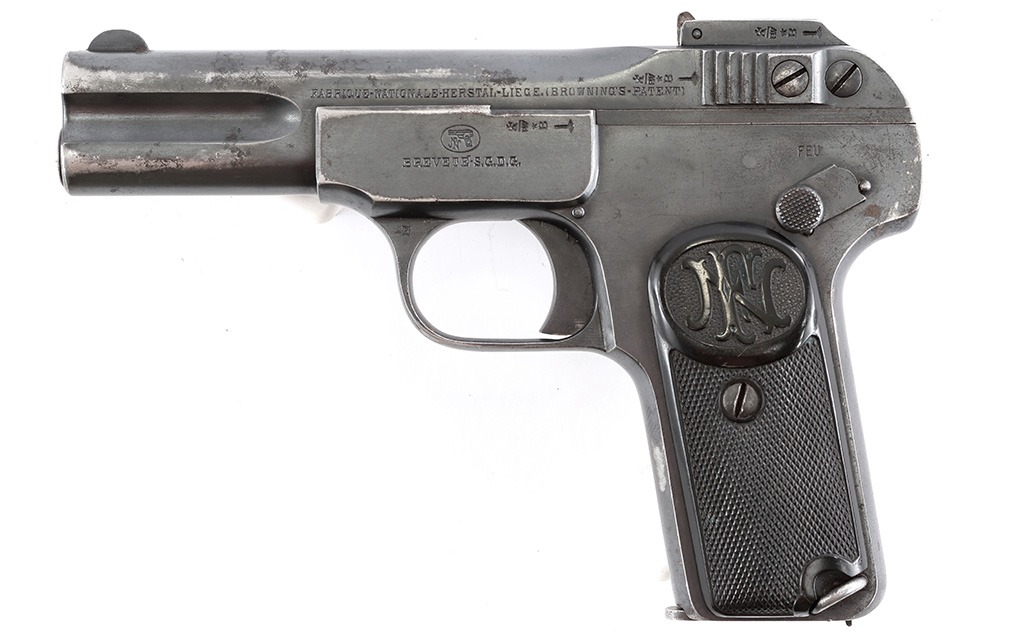

But, the 1900 was already an obsolete design even before the first one left the Liege factory. Browning was also working with Colt, for which he had designed a new approach to pistol mechanisms: the slide enclosing a barrel and the slide and barrel lock to each other, not to the frame or receiver. The Colt 1900 (yes, two Browning pistols, each called the 1900 by two different manufacturers, in different calibers. Browning was a busy and prolific designer.)
The Colt 1900 and its successors appear odd to us. Browning had ideas about what worked, but the end-users had their own. Things like a safety that was the rear sight and had to be pushed to permit firing didn’t go over well. And that brings us to the reason for many of the details on the 1911 that we see today: the U.S. Cavalry. The Cavalry was the premier arm of land militaries in all armies of the period. They were the paratroopers, special ops, SEALs, Rangers and LRRPs of their day, all rolled into one. And they used pistols. Oh, they had rifles, but a pistol and a saber (or sabre) were the classic arms of a cavalryman. And while the Colt 1900 showed significant promise, there were things about it that they did not like.
First, the cartridge. In 1900, the .38 Auto was a hot number. A 130-grain bullet at 1,100 fps was plenty good enough for people, but cavalry had to stop horses. So, it had to be a .45, or they would not buy it. Second, many functions of the Colt 1900 required two-handed operation. So Browning, in the next decade, would change, alter, redesign, and ditch whatever he must to use a .45 cartridge (and stand up to hard use and long service life) and make it as much as possible a one-handed pistol. That’s why all of the controls on a 1911 pistol can be managed with one hand: your firing hand. Safety on and off, magazine drop, slide release—they take one hand. To load it took two, but hey, there were limits even for Browning.
He did all this design work at a time when the average man stood 5 feet 8 inches tall, and the word “ergonomic” hadn’t been coined, yet he was a master of ergonomics. And, like the FN1900, the resulting 1911 was flat, powerful, accurate, reliable, durable and sold like hotcakes.
Much like the original 1900, the first 1911 had some design quirks. Bill Laughridge, owner of Cylinder & Slide, went to the trouble in the early 21st century of recreating the exact design of the first-production 1911, in the details before the various changes were made, as a centennial model. He tracked down as many un-molested original pistols as possible from the first production run and made exact replicas. These were beautiful pistols, pistols that were maddening in some regards. I tested one, and he asked me not to take the magazine catch assembly apart. “No one has ever managed to take one apart and reassemble it without scratching the finish,” he said. And a beautiful, mirror-finish blue job it was, I might add, so I did not take it apart.
One aspect of Browning’s design genius is that the grips aside, the 1911 is not held together by screws, pins, or other fasteners. Instead, he used interlocking assemblies, which lock each other into a mechanism and require a specific sequence to assemble or disassemble. That’s part of what we’ll be covering in this book.
With the manufacturing, assembly, and maintenance details taken care of, we entered World War I, and Colt made as many 1911 pistols as possible. Springfield Armory (the government arsenal, not the later company) also produced pistols. Post-war, the Army wanted changes based on feedback and use in The Great War. Those changes resulted in the 1911A1, which included larger sights (still minuscule by today’s standards), a grip safety tang and hammer spur combo that didn’t bite, and an arched mainspring housing.
Leading up to WWII, the government actually had some foresight and engaged the services of a few companies to let them learn how to make 1911A1s “just in case.” Just in case quickly turned into “make them now, as many as you can” and they made millions.
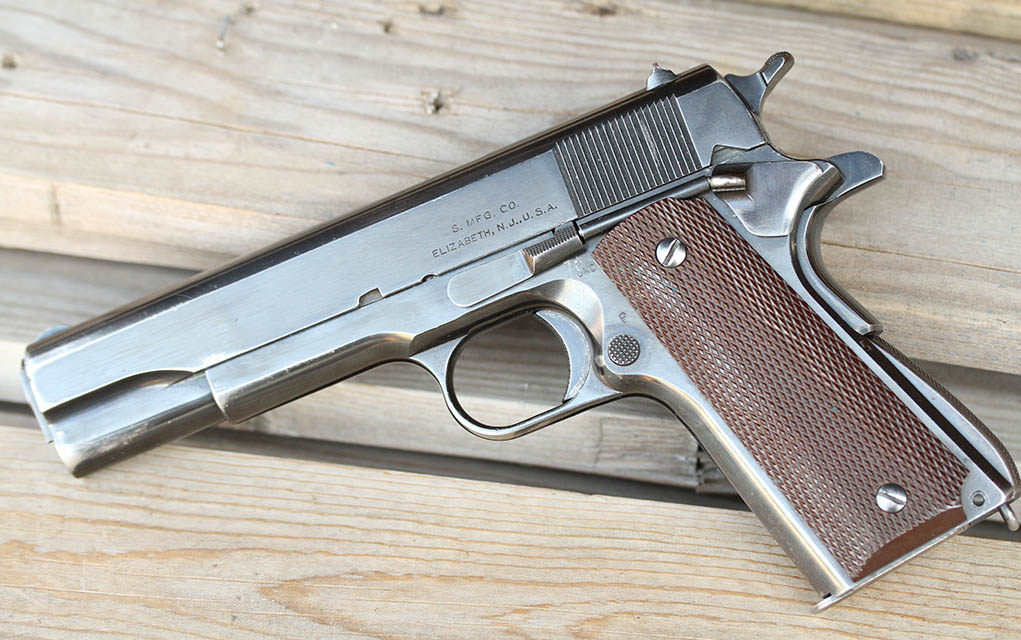

One detail about the 1911 that might interest Glock fans is that parts interchangeability was paramount to the companies producing 1911A1s for the WWII effort. Government inspectors would look over pistols as they were being made to ensure quality. Each lot of 5,000 handguns had a certain number test-fired to more than the “magazine’s worth of ammo to make sure it works” level. One in each lot was fired a whole lot more than that, and if it failed, the entire lot would be rejected, reworked, and tested again. And, at regular intervals, representatives of each company would meet and bring a box of regular production pistols with them. They would each disassemble a pistol and toss all the parts from each manufacturer’s pistol into bins. Then, the handguns would be assembled by those present, who grabbed a random part from the bin until the samples were all back together again. The resulting pistols would be inspected and test-fired. If a pistol failed, an immediate analysis would determine which part was the problem, who made it, and the problem corrected.
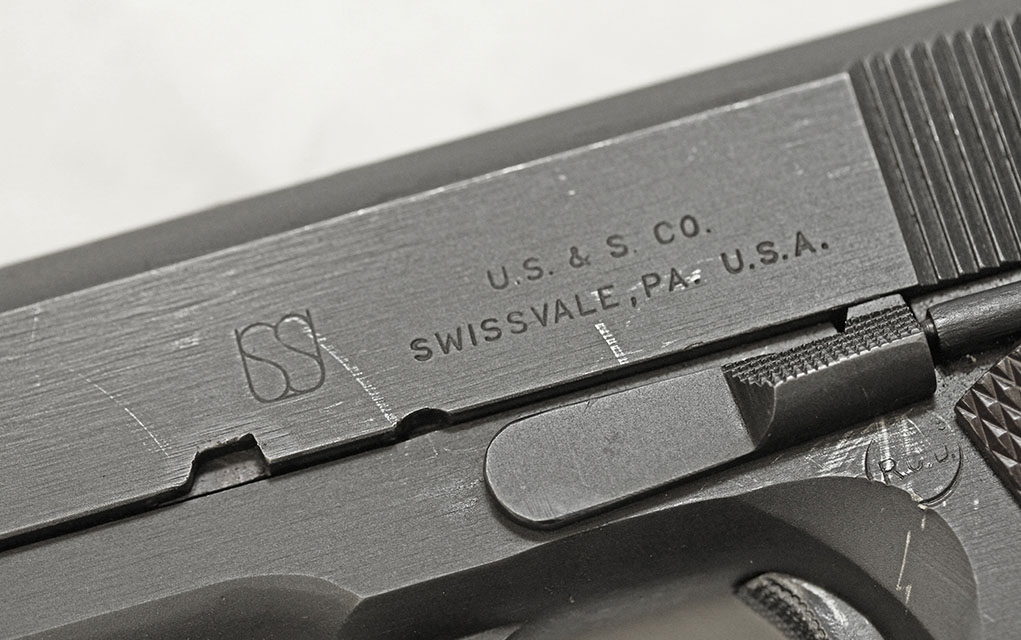

Once the war ended, and we had more 1911A1s than we’d need for decades, all the institutional knowledge vanished. The Army immediately started looking for a replacement, which would not be concluded for over 40 years. (And this would not be the only time it would take decades to replace something. The Army is still looking for a replacement for the Browning .50 machine gun, which first saw service in 1921. My prediction is that it never will.)
During the ’50s and ’60s, the only place the 1911A1 saw use (well, in the holsters of GIs and Marines, but pistols in military service are way down on the list of essential items, except to the people who are getting shot at) was in Bullseye competition. As a general rule, if a tool is used in one environment for one purpose, it will be gradually or not-so-gradually modified by the users until it is suited only to that use. A Bullseye 1911, while accurate, wasn’t useful elsewhere. And with no other design driver, the choices were USGI, box-stock as it were, or a 1911/1911A1 set up for Bullseye. Then, the IPSC (International Practical Shooting Confederation) came along. The idea that a pistol, especially a 1911, could be both accurate and reliable was new to many. But it could be built that way. You might snicker, but in the early days of IPSC competition, the standard of reliability we strove for was no more than one malfunction per thousand rounds fired. Part of the learning process was the pistol, part the magazine and part the ammunition, but we could exceed that level with work. And at that level of reliability, the 1911 delivered Bullseye-level accuracy.
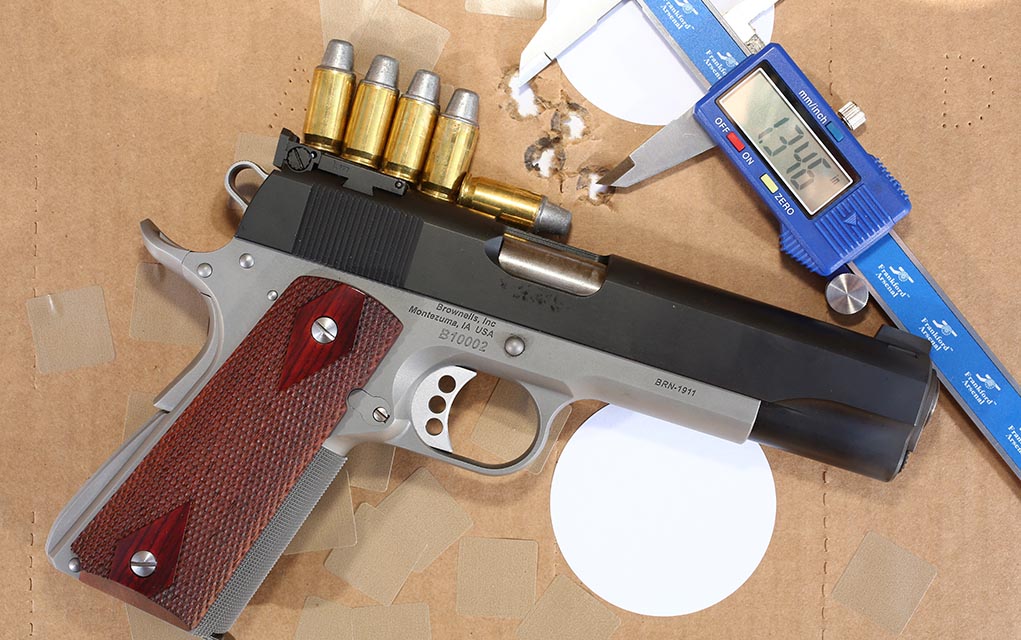

A brief aside: It is now common for 1911s to be far better than that old-school “one malf (malfunction) in a thousand” reliability standard. These days, you might never see a 1911-induced malfunction shooting a current-production pistol. And it is typical for them to be quite accurate. Les Baer guarantees his pistols will shoot no larger than 3 inches at 50 yards, and you can pay a bit extra to get 1.5 inches at 50 yards accuracy.
One obstacle to that performance level was Colt itself, which spent much of the 20th century in dire economic straits. It just couldn’t get a break between two World Wars (and the miscalculations involved in over-working machinery, etc.), economic downturns and at least one factory flooding. For the last half of the 20th century, Colt was owned by one or another conglomerate that viewed it as a cash cow, and thus, it was always strapped for new machines, designs and labor. My Colt Series 70 is an example.
In 1981, I attended the Targetworld National Championships. In those early years, IPSC was like drag racing, and if your match could get enough people from enough states, you’d call it a national championship. By looking over the sign-up sheet and seeing who was where (the list of top shooters was small enough that we all knew each other, not that I was a “top shooter” in 1981), I managed to place high enough as a Pro shooter to win a gun. That prize of a new-in-the-box Colt Series 70 was magnificent. And it was unreliable. One in a thousand? It wouldn’t go a full magazine without a malfunction. And it wouldn’t “malf” the same way twice in a row. In desperation, I learned gunsmithing to make my pistol work properly. And that was the case for all of us back then. By the early ’80s, the 1911s to build on were GI-standard surplus 1911/1911A1s or Colts. Both needed work to be competitive; they just needed different kinds of work.
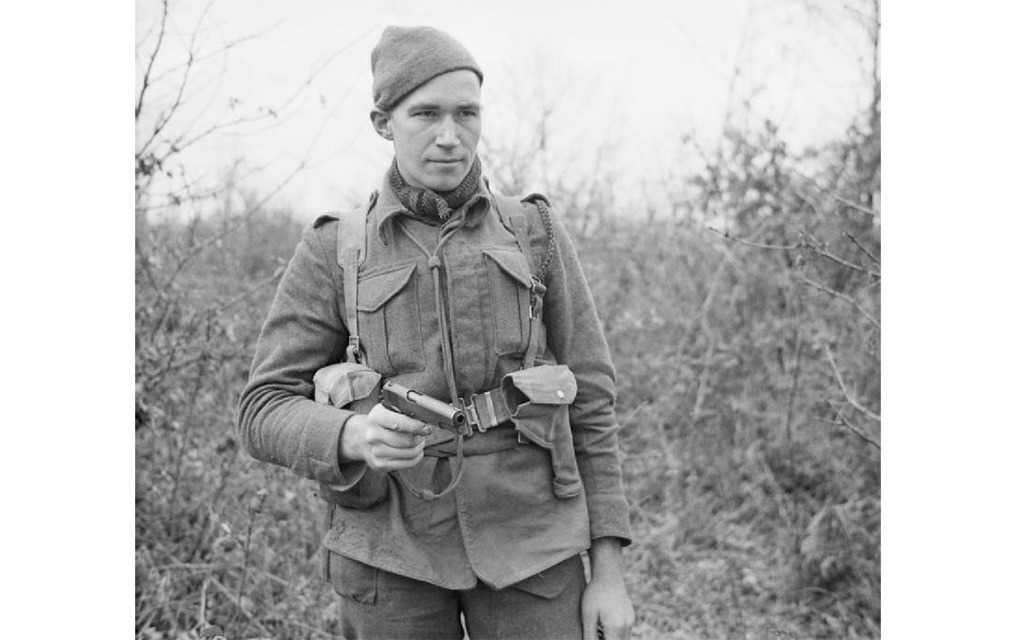

And that is the source of the urban myths—myths now, back then, truths—about the 1911 that “It needs a gunsmith to be reliable” or “You can have reliability or accuracy, but not both.” Today, no one makes an unreliable 1911 simply because they would be out of business quickly if they did.
Into the 1980s, the standard 1911 for IPSC was a 5-inch .45 ACP. And the Power Factor for Major was 185. (For example, a 230-grain round nose going 805 fps is now called a +P load.) But two competitors, Robbie Leatham and Brian Enos, changed that. Just as we were all learning about the advantages of a “comp,” a compensator, they also switched to .38 Super. Comps work by re-directing muzzle gases. The Super runs at a higher pressure, and higher pressure gases are better than lower for comps. In short order, we had all switched over to .38 Supers; then they got red-dot optics, and then a few years later, we swapped our single-stack red-dot guns for hi-cap Supers with red-dots. By 1995, you were uncompetitive if you were not running a red-dot hi-cap Super with 28-round magazines. And the howls of “not real-world” were deafening. (I can’t help but look around now at hi-cap, comped 9mm pistols for everyday carry, with slide-mounted red dots, and smile a little.)
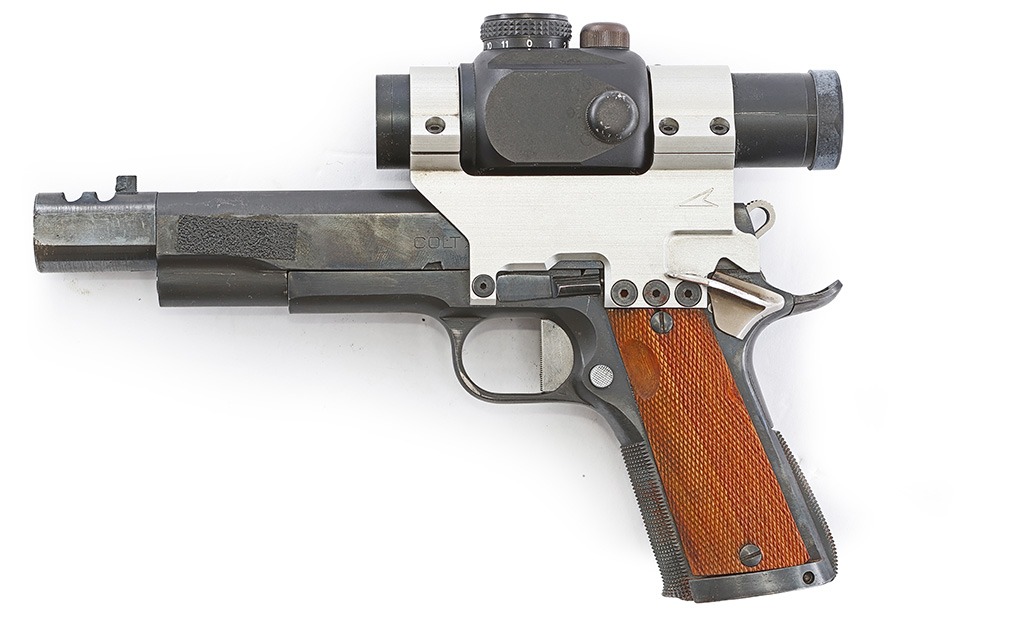

The early 1990s saw a new 1911 design with a plastic grip and a steel rail section made by STI. Now, it is named Staccato, and there are other makers of the same approach, from overseas and here in the U.S. by Springfield Armory.
Look around you today and see how many shooters carrying a pistol for defense (and law enforcement agencies) have a red-dot optic on a 9mm holding at least 17 rounds, and with some straight from the factory compensated, and consider again the guy in your gun club who says “competition isn’t real” and “IPSC will get you killed.” No, competition pushes the boundaries. Determining if the changes benefit you in a defensive role is up to you.
Simultaneously, the equipment categories in IPSC (by then, the USPSA or the United States Practical Shooting Association) fragmented. The origins of “run what you brung” had proven what won, but not everyone wanted to be shooting a Super. So, competition added equipment divisions. And there, the .40 S&W proved to be—for various, arcane reasons—the alternative to the Super in some divisions. The Production Division allowed 9mm pistols to compete and grow until IPSC/USPSA, the home of the .45 1911, had most competitors shooting a 9mm pistol that wasn’t a 1911. Such is life.
In the mid-1980s, Springfield Armory saved us from Colt by offering 1911A1s. At first, they were parts kits, everything you needed to assemble a 1911A1 in the box, but no tools, assembly required, or batteries were included. I won a bunch, bought them, and built them. Springfield Armory then offered assembled pistols and sponsored competitions. Other companies entered the competition field and offered their guns, gear and equipment—so much so that you could shoot in a local club’s annual championship and win a Springfield. If you practiced and were good, you could win enough loot to build a better gun, load enough ammo to get better, and then really get a leg up on the competition.
As did Colt and Smith & Wesson, Springfield sponsored a team, and smaller, specialized companies would sponsor individual shooters. The era of the professional practical shooter was born. The top shooters could travel the circuit, compete, win, get paid, and, on the side, be paid to teach other shooters. Of course, this was a gypsy life, spending most of the year on the road, and divorces and near-divorces were common.
By the mid-to-late 1980s, it looked like the days of the 1911 were over. Oh, it would still maintain a presence in Bullseye, at least as long as those using it were still competing. But the 1980s saw the rise of the “Wonder-nine” high-capacity 9mm pistols with a double-action firing mechanism and holding many rounds. A Browning Hi Power didn’t much threaten a 1911 with 7+1 of .45 ACP with 13+1 rounds of 9mm. But a G17 with 17+1? An S&W M59, a Sig P226, a Beretta 92, and more to come? With the adoption of the M9 for military use and police acceptance of 9mms, ammo makers were turning to make hollow-points that actually expanded.
The 1911’s days were numbered. But they were saved by, of all people, Bill Clinton. The Assault Weapons Ban of 1994 vilified some features of the AR-15 and made magazines of over 10 rounds verboten. This did two things: First, tell Americans they can’t have something and many will ask, ”Where can I buy one?” By the time the ban expired 10 years later, there were markedly more AR-15 manufacturers than before.
And in the pistolverse, people rightly figured, “If I can only have 10 rounds, I want 10 big ones, not smaller ones.” A G17 with a 10-round magazine was just stupid. And at the height of all this, Glock 17-round magazines were offered for as high as $150 per. (No, I’m not kidding or making it up. I don’t know if any sold, but that was the asking price.) The sales of 1911s jumped.
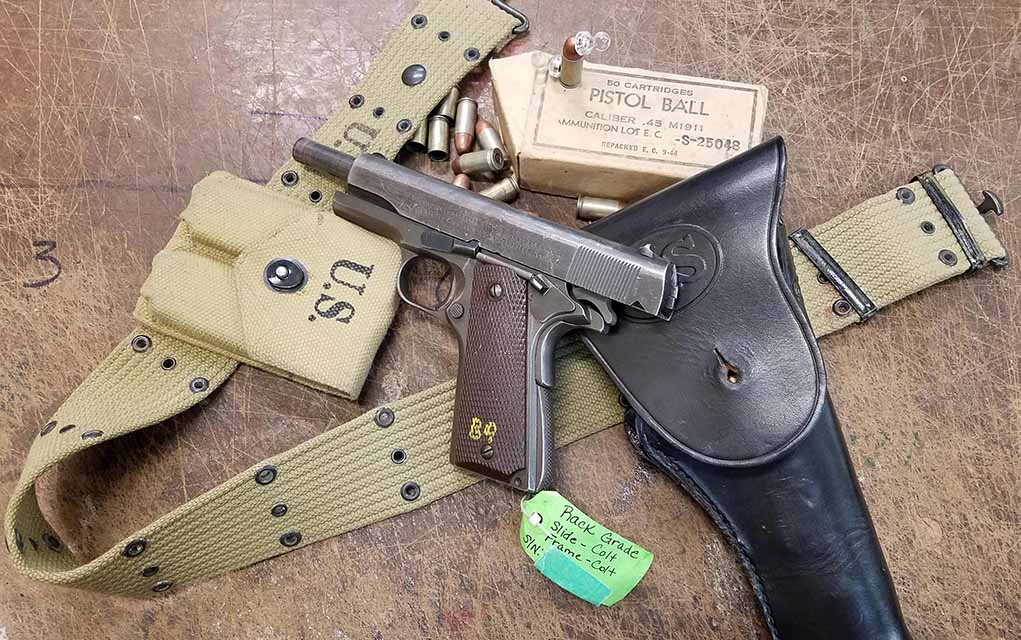

At the beginning of the 21st century, Kimber decided (after various business changes) to get into the 1911 market. But, rather than make stock guns—as Springfield had when it entered—Kimber went semi-custom. It could exploit modern manufacturing techniques and build a 1911 with mid-level custom details as a production item and sell for less than you’d pay a custom pistolsmith to upgrade your box-stock pistol. Similarly, the Dan Wesson company jumped in and offered semi-custom features on production guns. Rock Island Arsenal brought parts and pistols from the Philippines, and its catalog is full of options. The newest entrants are the Turkish makers, such as Tisas, which make custom-featured 1911s at excellent prices compared to what we paid for those as extras “back in the day.”
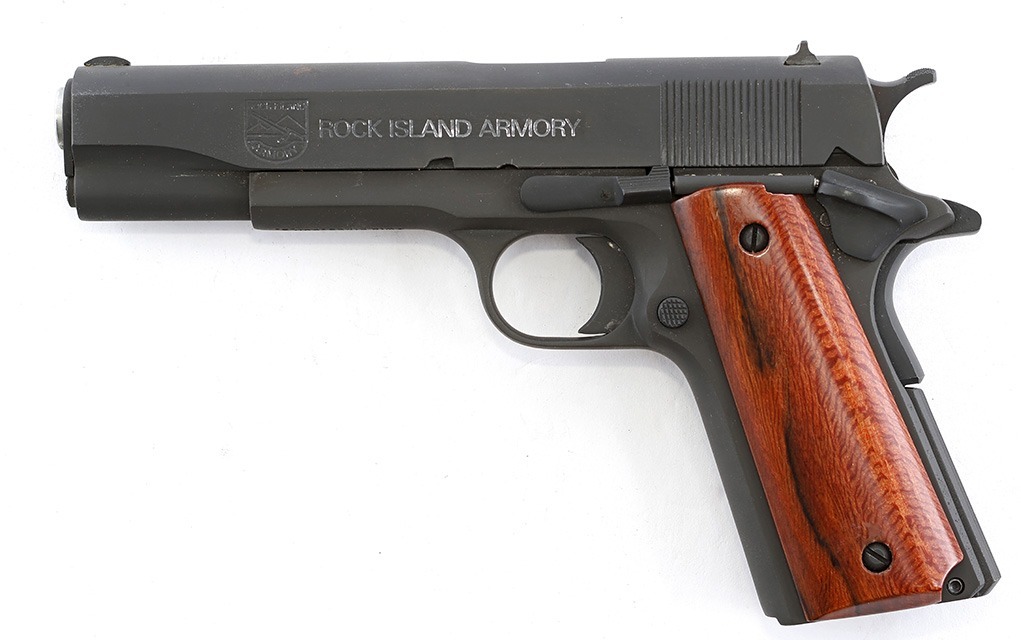

Now, a couple of decades later, if you want a USGI-level pistol, you must hunt down that variant in a catalog of 1911s because everything else is now semi-custom or higher-featured. Of course, at the moment, the CMP (Civilian Marksmanship Program) is selling off the 1911s and 1911A1s it has, so if you get lucky and score one, you can get a real-deal GI pistol. It won’t be new; it will be rebuilt, but it will also cost you less than an identical one would require in gunsmithing should you win one at an auction. Today, the details you can get out of the box on newly made pistols are often better than custom-built ones in the old days and for less cost. And yet, anything made by the hand of man is imperfect. So, your 1911 might need some work. Or you want something a bit different from what the maker offers. Or, you have worked yours hard, and it needs some TLC. Maybe you want to know how things work, what cleaning entails, or what a given part does in the scheme of things.
Editor’s Note: This article is an excerpt of Gun Digest’s Gunsmithing the 1911: The Bench Manual.
More On Classic Guns:


Next Step: Get your FREE Printable Target Pack
Enhance your shooting precision with our 62 MOA Targets, perfect for rifles and handguns. Crafted in collaboration with Storm Tactical for accuracy and versatility.
Subscribe to the Gun Digest email newsletter and get your downloadable target pack sent straight to your inbox. Stay updated with the latest firearms info in the industry.




